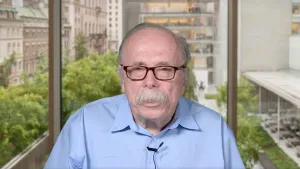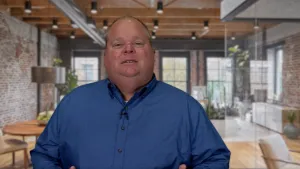
In California, Michigan and Georgia, an easy win is bringing dollars — and delight — back to city centers.

The Atlantic Avenue Mixed Use Plan includes infrastructure investments and could bring 4,600 new housing units to parts of Brooklyn.

DARTSpace Platform Streamlines Dallas TOD Application Process
The Dallas transit agency hopes a shorter permitting timeline will boost transit-oriented development around rail stations.

Congressman Proposes Bill to Rename DC Metro “Trump Train”
The Make Autorail Great Again Act would withhold federal funding to the system until the Washington Metropolitan Area Transit Authority (WMATA), rebrands as the Washington Metropolitan Authority for Greater Access (WMAGA).

Colorado Officials Plan Denver-Fort Collins Rail Service by 2029
About $40 million a year in state funding from new transportation fees could be the key to getting a short passenger rail line from Denver to Fort Collins up and running in the next four years, Colorado officials said last week.

Texas, California Rail Projects Seek Out Private Funding
In the wake of Trump’s cuts to high-speed rail projects, rail authorities are looking to private-public partnerships to supplement their budgets.

Seattle Families Build Their Dream Apartment Building From Scratch
A group of friends decided to buy land and finance the construction of a custom-built apartment building with unique apartment layouts and sizes and a wealth of shared amenities.

Trump's “Able Bodied” Public Housing Limits Could Displace Over 300,000 New Yorkers
As part of 43% cut to federal rental assistance, Trump is proposing a two-year limit on public housing tenure for “able bodied adults.”

Meet Our New AI Columnist!
In a new monthly column for Planetizen, planner and artificial intelligence expert Tom Sanchez invites a conversation about how AI will shape urban planning — and how urban planners can (and should) shape AI.

Dallas Ditches Parking Minimums in 14-1 Vote
The sweeping city council decision removes set parking requirements from developments downtown, near transit, small businesses and more.

Bill to Allow Smaller Homes on Smaller Lots Resurrected in Texas House
A top priority of Lt. Gov. Dan Patrick, the legislation would make it easier to construct homes on smaller lots. A House Democrat briefly killed the bill.

Chicago Transit: $770M Shortfall, 40% Service Cuts Loom
Despite dire warnings from transit officials, the Illinois General Assembly ended its legislative session without a solution.

Congressman Proposes Bill to Rename DC Metro “Trump Train”
The Make Autorail Great Again Act would withhold federal funding to the system until the Washington Metropolitan Area Transit Authority (WMATA), rebrands as the Washington Metropolitan Authority for Greater Access (WMAGA).

Time Running Out for Illinois Transit Bill
Chicago-area transit agencies face a daunting budget gap if lawmakers fail to agree on a funding bill by the end of the current legislative session.

Judge Extends NYC Congestion Pricing Through at Least June 9
A federal judge halted the Trump administration’s effort to kill the program, which remains in limbo as a lawsuit filed by the MTA moves forward.

USDOT Could Pull Federal Funding for New York
The federal government gave the state until May 21 to end new York City’s congestion pricing program or risk losing federal funding and project approvals.
City of Mt Shasta
City of Camden Redevelopment Agency
City of Astoria
Transportation Research & Education Center (TREC) at Portland State University
US High Speed Rail Association
City of Camden Redevelopment Agency
Municipality of Princeton (NJ)

Chicago Transit: $770M Shortfall, 40% Service Cuts Loom
Despite dire warnings from transit officials, the Illinois General Assembly ended its legislative session without a solution.

Congressman Proposes Bill to Rename DC Metro “Trump Train”
The Make Autorail Great Again Act would withhold federal funding to the system until the Washington Metropolitan Area Transit Authority (WMATA), rebrands as the Washington Metropolitan Authority for Greater Access (WMAGA).

Time Running Out for Illinois Transit Bill
Chicago-area transit agencies face a daunting budget gap if lawmakers fail to agree on a funding bill by the end of the current legislative session.

Judge Extends NYC Congestion Pricing Through at Least June 9
A federal judge halted the Trump administration’s effort to kill the program, which remains in limbo as a lawsuit filed by the MTA moves forward.

USDOT Could Pull Federal Funding for New York
The federal government gave the state until May 21 to end new York City’s congestion pricing program or risk losing federal funding and project approvals.
Walkable City 1: Why Walkability?
1.25 AICP CM
Instructor Jeff Speck marches through his five principal reasons for making more walkable places—Economics, the Environment, Public Health, Equity, and Social Cohesiveness—in order to arm practitioners with the full range of arguments in favor of pro-walkability planning.
Top Books
An annual review of books related to planning.
Top Urban Planning Mobile Apps in 2023
Planning apps for a brave new world.
Top Websites
The best of the Internet—since 2002.
Top Schools
The Top Graduate Urban Planning Programs in the U.S.










































